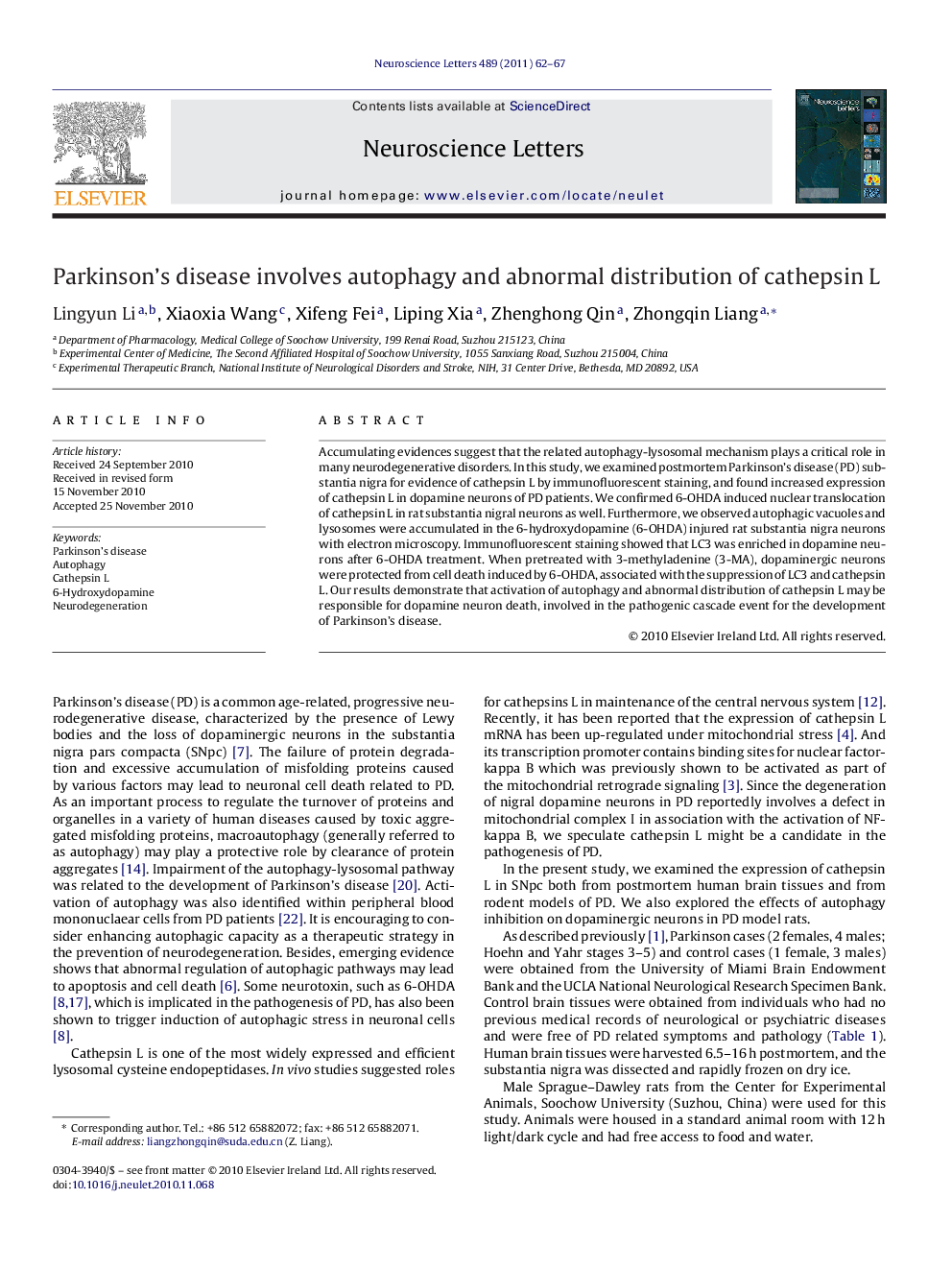| کد مقاله | کد نشریه | سال انتشار | مقاله انگلیسی | نسخه تمام متن |
|---|---|---|---|---|
| 4345294 | 1296721 | 2011 | 6 صفحه PDF | دانلود رایگان |

Accumulating evidences suggest that the related autophagy-lysosomal mechanism plays a critical role in many neurodegenerative disorders. In this study, we examined postmortem Parkinson's disease (PD) substantia nigra for evidence of cathepsin L by immunofluorescent staining, and found increased expression of cathepsin L in dopamine neurons of PD patients. We confirmed 6-OHDA induced nuclear translocation of cathepsin L in rat substantia nigral neurons as well. Furthermore, we observed autophagic vacuoles and lysosomes were accumulated in the 6-hydroxydopamine (6-OHDA) injured rat substantia nigra neurons with electron microscopy. Immunofluorescent staining showed that LC3 was enriched in dopamine neurons after 6-OHDA treatment. When pretreated with 3-methyladenine (3-MA), dopaminergic neurons were protected from cell death induced by 6-OHDA, associated with the suppression of LC3 and cathepsin L. Our results demonstrate that activation of autophagy and abnormal distribution of cathepsin L may be responsible for dopamine neuron death, involved in the pathogenic cascade event for the development of Parkinson's disease.
Research highlights▶ Abnormal distribution of cathepsin L is observed in substantia nigral of patients with Parkinson's disease. ▶ 6-OHDA induces nuclear traslocation of cathepsin L in nigral dopamine neurons of rats. ▶ Inhibition of autophagy rescued the dopamine neurons from 6-OHDA-induced cell death. ▶ Activated autophagy and abnormal distribution of cathepsin L may be responsible for dopamine neuron death.
Journal: Neuroscience Letters - Volume 489, Issue 1, 1 February 2011, Pages 62–67